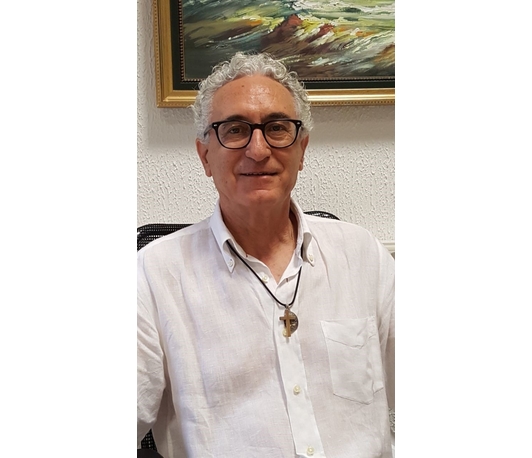Wet-chemical synthesis and catalytic properties of metal clusters of small atomicity without protecting ligands
- ISC Department Seminar
- Date: Jan 26, 2024
- Time: 02:00 PM - 03:00 PM (Local Time Germany)
- Speaker: Prof. Dr. M. Arturo López-Quintela
- Department of Physical Chemistry NANOMAG Lab, iMATUS University of Santiago de Compostela
- Location: Building M, Richard-Willstätter-Haus, Faradayweg 10, 14195 Berlin
- Room: Seminar Room
- Host: Interface Science Department
- Contact: nikolaus@fhi-berlin.mpg.de

M. Arturo Lopez-Quintela1,2 and David Buceta2
1iMATUS, University of Santiago de Compostela, 15782-Santiago de Compostela, Spain; 2NANOGAP, Rúa Xesta, 78-A2, 15895 O Milladoiro, A Coruña, Spain
Metal nanoclusters show very different properties than both, nanoparticles, and bulk, due to the quantum confinement of the free electrons [1]. Such nanoclusters can be seen as super-atoms (or molecules) in which atoms are linked by strong covalent bonds [2]. In the past decade, we have developed wet-synthetic methods, based on kinetic control without binding ligands, to produce monodisperse nanoclusters (mainly of Au, Ag and Cu) of small atomicity (<≈ 20 atoms) at pilot scale (>≈ g/day) [3]. In this talk we will describe the background of this technique and analyze some of their catalytic activities for both, unsupported clusters in solution and supported on different substrates. Among the main outcomes we can highlight that Au5 clusters display high catalytic activities for the aerobic oxidation of thiophenol to disulphide [4]. Very recently, we have also reported exceptional catalytic activities of Ag5 clusters for the irreversible aerobic oxidation of thiols [5]. We observed that there is a volcano-type behavior for the size-dependent catalytic activities in the size range 2-10, being the highest catalytic activity around 5 atoms. There is also an increasing catalytic activity in the series O2<H2O2<OH radicals, which was used to demonstrate a new catalytic approach to cancer therapy [5]. Ag5 and Cu5 were also used as catalytic radical scavengers in industrially relevant processes involving detrimental free radical formation such as polymer stabilization [6] and as catalyst/photocatalyst in the production of pure hydrogen by a novel photo-thermal looping process [7]. Finally, we will briefly comment on the use of Cu5 clusters for the activation of 2D polymerization on insulating surfaces reducing the polymerization temperatures by ≈ 100ºC [8].
[1] see e.g. Protected Metal Clusters: From Fundamentals to Applications, Tatsuya
Tsukuda, Hannu Häkkinen, Elsevier, Amsterdam, 2015.
[2] see e.g. P. Jena, Q. Sun, Chem. Rev. Am. Chem. Soc. 118 (2018) 5755–5870.
[3] see e.g. S. Huseyinova et al. J. Phys. Chem. C 120 (2016) 15902−15908.
[4] A. Corma et al. Nat. Chem. 5 (2013) 775–781.
[5] V. Porto et al. Adv. Funct. Mater. (2022) 2113028.
[6] I.R. Arias et al. J. Colloid Interface Sci. 628 (2022) 437–447.
[7] EU Patent applications P22321EP00 (2022) and EP23382386.3 (2023)
[8] A. Quadrelli et al. Nature Chem. -under revision-
Brief Bio:
Emeritus Professor of Physical Chemistry at the University of Santiago de Compostela (USC, Spain). Postdoc in Germany at MPI für Biophysikalishe Chemie, Göttingen and University of Bielefeld. Visiting Professor at MPI für Metallforschung, Stuttgart, Germany; Centre for Magnetic Recording Research, UCLA, USA; Yokohama Natl. University, Japan and Research Centre for Materials Science, Nagoya, Japan. Solvay Award in Chemistry and Burdinola Award in the Field of New Nanotechnologies in Chemistry. Co-founder and Principal Scientific Advisor of the company NANOGAP (www.nanogap.es), founded in 2006 and dedicated to the production of nanomaterials and metal nanoclusters. In 2019 co-founder of Arjuna Therapeutics (www.arjunatherapeutics.com) to explore metal nanoclusters as a new class of treatment to address major problems in oncology. He has published more than 350 publications (h-index 60) and is co-author of 28 granted international patents. His research interests are the synthesis of “ligand-free” metal nanoclusters by soft chemical techniques and their applications in catalysis and therapeutics.